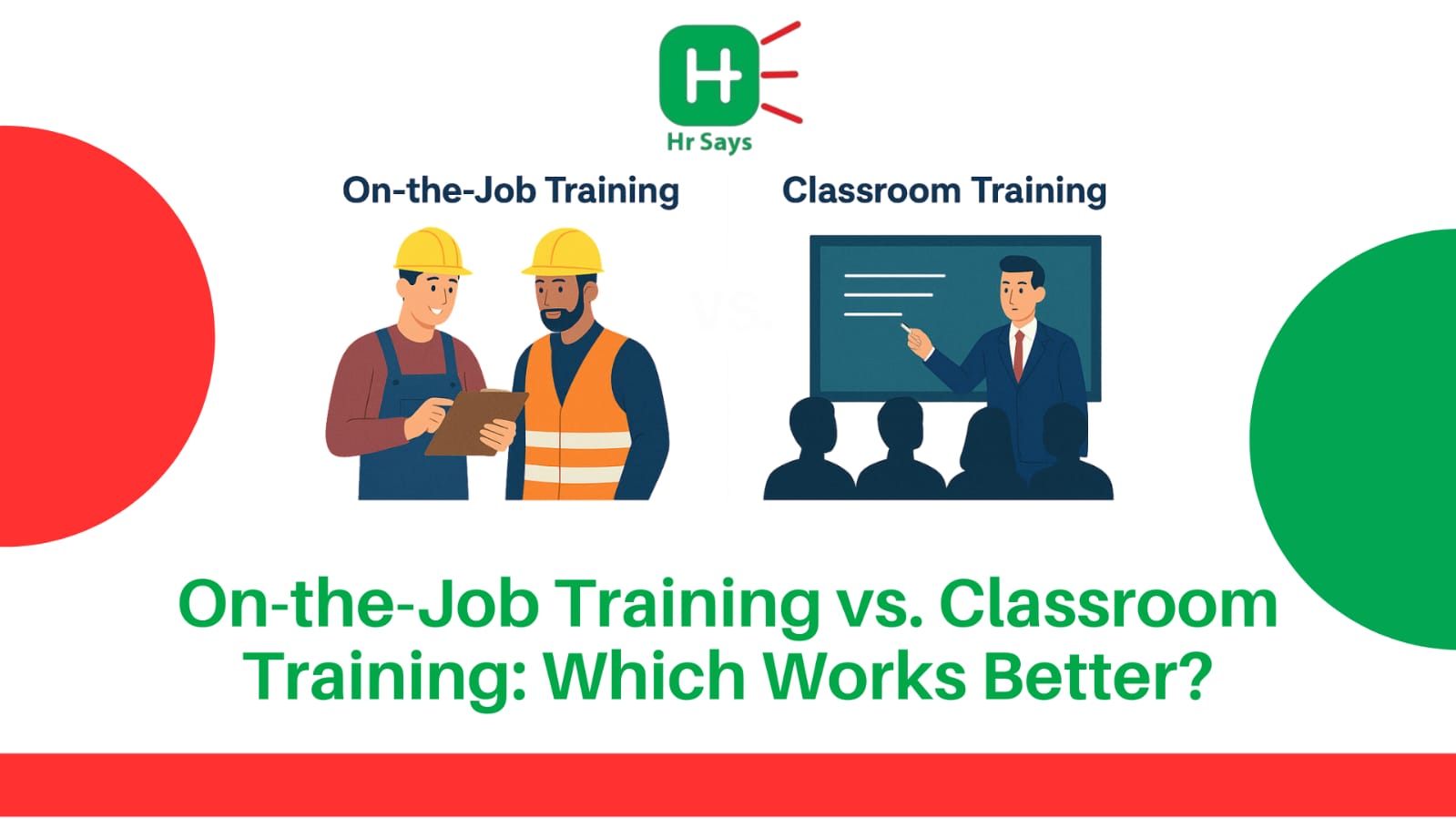Have you ever asked yourself why some individuals pick up faster in the work place as opposed to others who prefer the structure form of lessons in the classroom? On the job and classroom training would develop skills differently. Knowing how they work can assist in the selection of the most appropriate growth strategy.
On-the-Job Training: Learning by Doing
On the job training (OJT) puts trainees at the actual working conditions. Skill-building takes place through actual work rather than on theory-based classes. This is an approach which is taken as concrete and urgent.
Key Highlights of On-the-Job Training
● Employees learn in real situations.
● Mistakes become lessons.
● Mentorship from experienced workers adds value.
● Adaptability grows naturally.
This approach often suits roles that demand quick application and hands-on skills. The workplace itself becomes the classroom, turning every challenge into a lesson.
Classroom Training: Structure and Discipline
Classroom training provides a guided learning space. Lectures, presentations, and discussions make concepts clear before they are applied in real life. It is systematic and controlled, giving learners a strong base of knowledge.
Key Highlights of Classroom Training
● Organized curriculum with step-by-step guidance.
● Easier for group learning and discussions.
● Theoretical clarity before practice.
● Safer environment for beginners.
Classroom setups allow questions and group engagement. It gives time to think before applying.
For roles where concepts matter as much as practice, this format is often valuable.
Comparing the Two Approaches
The debate between OJT and classroom training is not about superiority but suitability. Each
works differently depending on the learner’s role and needs.
Strengths of On-the-Job Training
● Practical exposure from day one.
● Immediate relevance to tasks.
● Strong mentorship opportunities.
Strengths of Classroom Training
● Structured lessons for gradual learning.
● Ideal for theory-based roles.
● Safe space for trial and error.
When placed side by side, both methods reveal unique advantages. Neither can replace the
other completely. Instead, they complement one another when blended wisely.
Which Works Better?
The answer lies in context. Technical jobs often rely on classroom grounding before practice.
Customer-facing or operational roles benefit more from direct workplace exposure.
Organizations today combine both methods to balance theory with practice.
Blended training models are gaining ground. Learners first grasp concepts in a classroom and
then sharpen skills through real-world experience. This ensures balance, minimizing risks while
maximizing growth.
Conclusion
Training is not a one-size-fits-all process. On-the-job training builds quick adaptability, while classroom training offers clarity and structure. The most effective learning often emerges from a mix of both approaches. Choosing wisely depends on goals, roles, and the nature of work.

 On-the-job and classroom training shape skills differently. While one focuses on real-world experience, the other builds theoretical clarity. Both have strengths and limits. Blending the two often creates the most effective and balanced learning path.
On-the-job and classroom training shape skills differently. While one focuses on real-world experience, the other builds theoretical clarity. Both have strengths and limits. Blending the two often creates the most effective and balanced learning path.












.jpeg)
.jpeg)

.jpeg)

.jpeg)


.jpeg)

.jpeg)

.jpeg)


